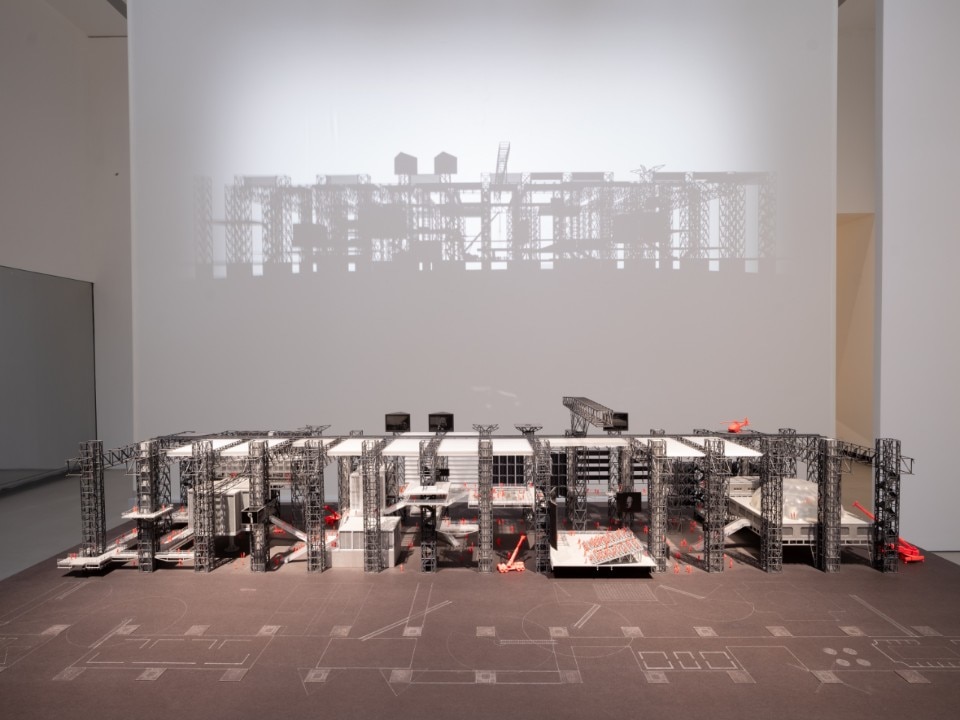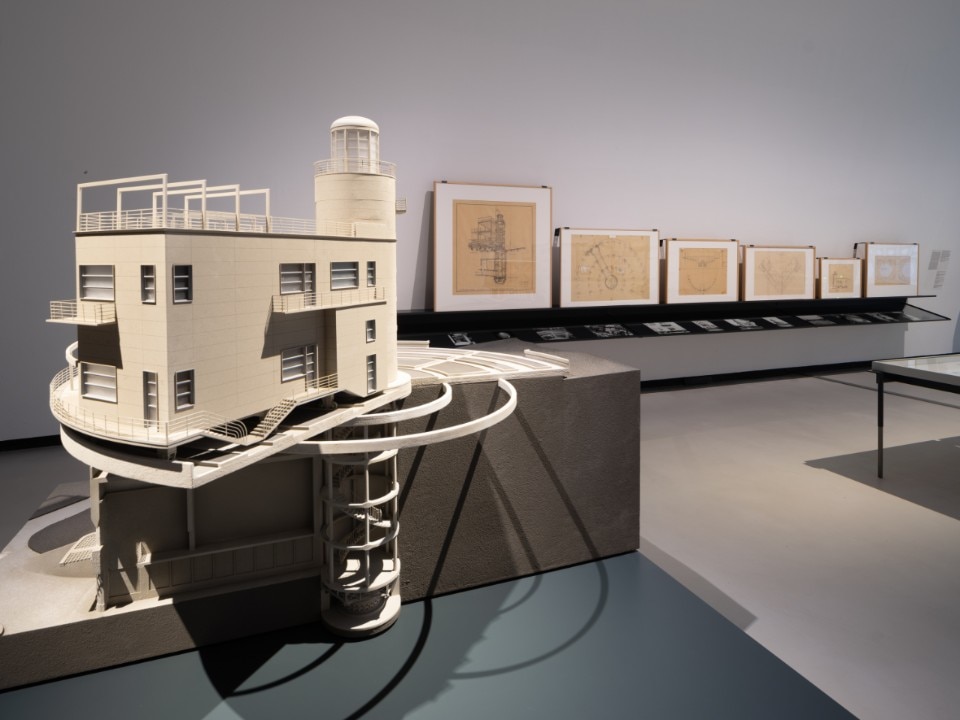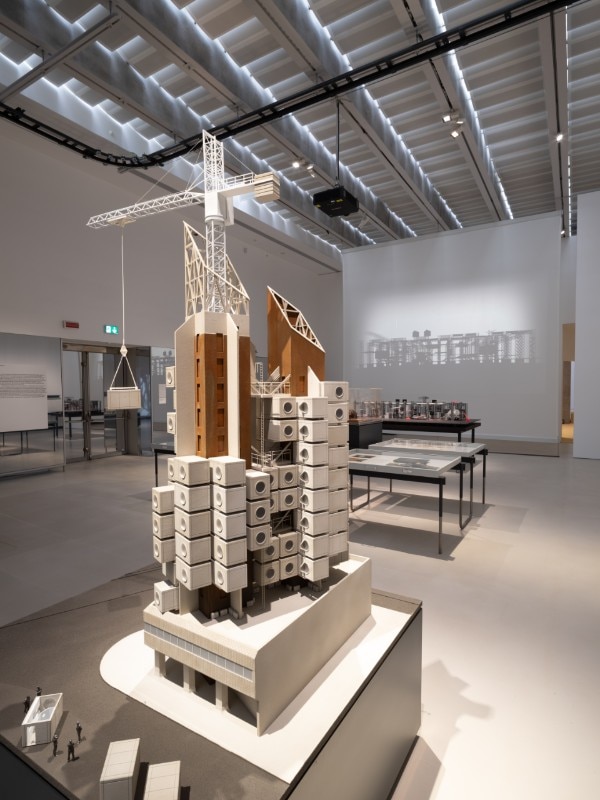Over the last one hundred and fifty years, the acceleration in the pace of socio-economic, environmental and technological change has given way to the idea that it is movement, rather than stasis, that decodes the complexities of modern and contemporary times. An exhibition at the Maxxi museum in Rome, curated by New York studio Diller Scofidio + Renfro, then set out to investigate what this means in architecture.
“Firmitas” in construction (stability, one of the Vitruvius' founding principles) is under scrutiny, regarded as obsolete stillness and questioned by various forms of thought: from the mechanistic approaches fascinated by speed and techno-scientific progress we can find in the Avant-gardes, the Modern Movement, the radical megastructures of the 1960s and in High Tech, to those more “organically” sensitive to the transformation of urban systems, between the Japanese Metabolism of the 1960s and Neri Oxman's ecologically programmed skyscraper as a symbiont of the environment.

The “Restless Architecture” exhibition is part of this track, which is not new to architectural thought and offers an opportunity to take a closer look at a topic that is still relevant today and that regards architecture in motion as an effective response to the transience of liquid society, the perpetual search for innovation and the emergencies of wars and natural disasters.
It is no coincidence that the exhibition is located at Maxxi, and that the New York studio Diller Scofidio + Renfro has been in charge of the curatorship and exhibition design.
With its dazzling forms, the building by Zaha Hadid expresses an idea of architecture as a “ground of lines of forces” (in the words of the architect herself), animated by articulated paths, changes of perspective and unexpected angles from which a dynamic and energising spatial unity emerges.
Between “kinetic” performances, choreographies, mobile and mechanical architectures, and robotic installations, then, Diller Scofidio + Renfro has built in over 40 years a rich portfolio of works inspired by movement, under the banner of contamination between architecture and other artistic disciplines. We recall the “disorder” induced in elements and functions in the traditional domestic environment of Kinney House (1981), the reinterpretation of the experience of the promenade architecturale and the vision in motion of The Slow House (1991) and of the Institute of Contemporary Art (2002), the overturning of visual and acoustic references in the perception of space of The Blur Building (2002) and the kinematic motion of the telescopic structure of The Shed (2019) that expands and contracts according to needs.

The exhibition is not “about” the studio's work but rather a reflection “together with” the studio on the theoretical and cultural aspects of the movement in architecture, here matured through in-depth research work resulting in a extensively documented collection of 26 projects by various authors among the utopian and the pragmatic, the experimental and the ecological. In the words of curator Elizabeth Diller: “the invitation to curate and design an exhibition on architecture in motion at MAXXI was an opportunity to engage with the dynamics of Zaha Hadid's building and, at the same time, to situate our practice's work within a broader constellation of architectural projects defined by their resistance to the stubborn inertia of architecture. Stability is not always a virtue for architecture. Our dynamic world is shaped by the incessant succession of political upheavals, economic fluctuations, social reforms, climate change and technological innovations, which make architecture's inertia its own responsibility. Why should architecture stand still?”.

And precisely the installation is conceived as a “kinetic” choreography. In synchrony with the sounds and images, a system of curtains moves through the gallery, continuously redefining its space and offering the visitor changing perspectives. The exhibition is divided into four interrelated sections that interpret "restless" architecture in different keys: "adaptive", capable of evolving through kinetic, assemblable, and variously combinable elements (from the aforementioned The Shed, to Kisho Kurokawa's Nagakin Capsule Tower, to Cedric Price's unrealised Fun Palace); “mobile”, like those who experience it (from Hans Hollein's inflatable office, to Krzystof Wodiczko's homeless vehicle, to NLÉ/Kunlé Adeyemi's Makoko Floating School); “operable”, whose elements can be regulated by technology (from Montgomery County's rotating prison, to Oma's Maison à Bordeaux); “ecodynamic”, in a biunivocal dialogue with the environment (from Angelo Invernizzi's Villa Girasole, to Jean Nouvel's Institut du Monde Arab).

The models on display are sculpted by calibrated lighting, and stand out in the fluid and essential space, drawing the eye to their forms, which would be challenging for any model-making expert.
The exhibition aims to contribute to the reflection on a building that is not conceptually subordinated to a paradigm of permanence in space and time; moreover, it also enriches the museum's architecture collection, with the project The Shed by Diller Scofidio + Renfro and the Nakagin Capsule Tower by Kisho Kurokawa (of which a precious “capsule” that survived demolition will be exhibited in the Alighiero Boetti square), in keeping with MAXXI's programme of acquisitions of Contemporary Architecture and Design.

"The Wings", the triple-certified building of the future
The Wings is an innovative complex that combines futuristic design and sustainability. With BREEAM Excellent, WELL Gold, and DGNB Gold certifications, the building houses offices, a hotel, and common areas, utilizing advanced solutions such as AGC Stopray glass for energy efficiency.




